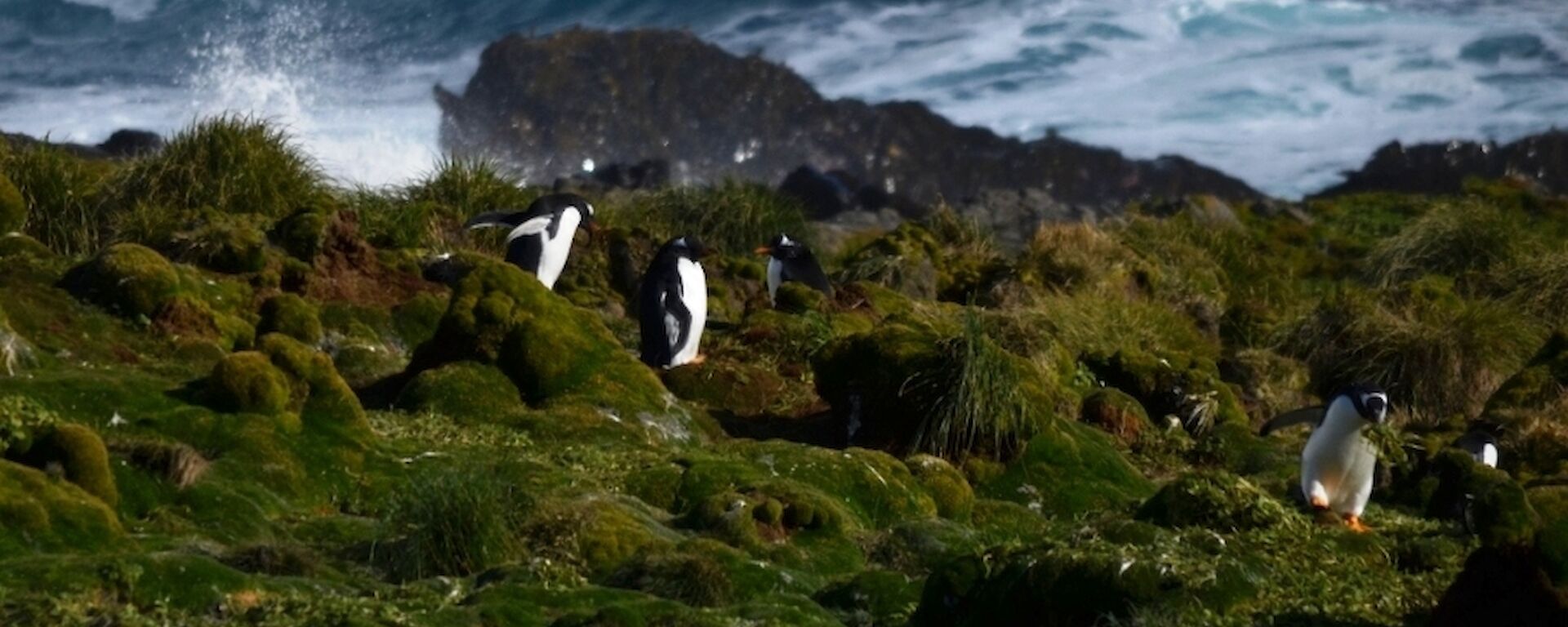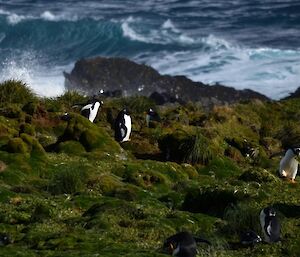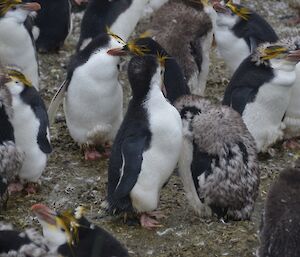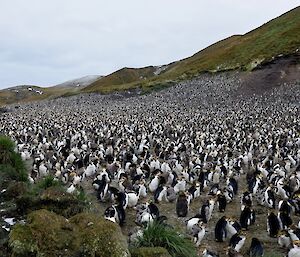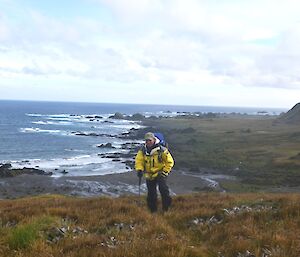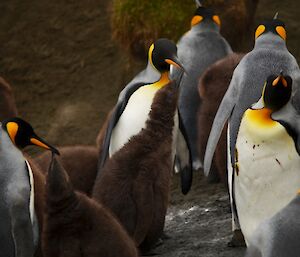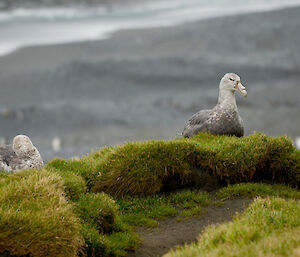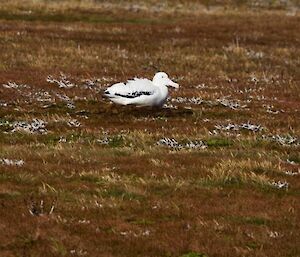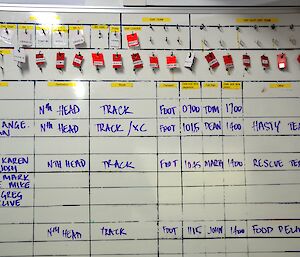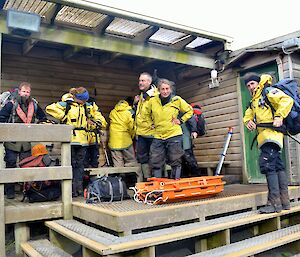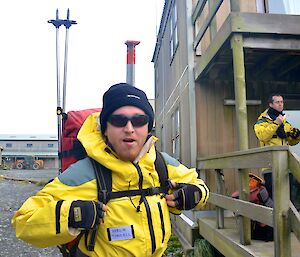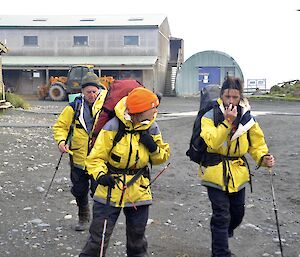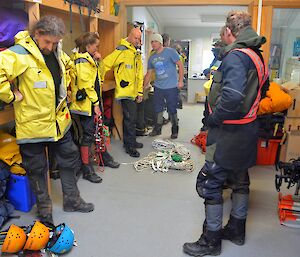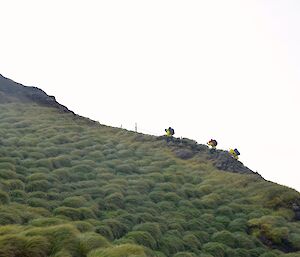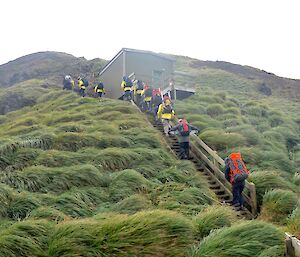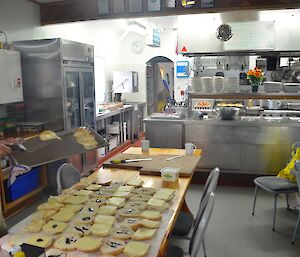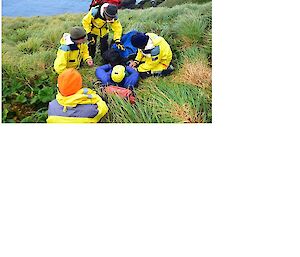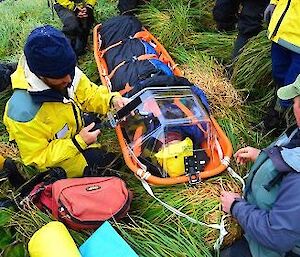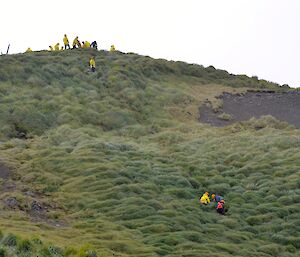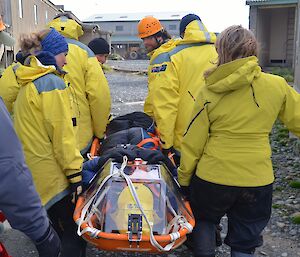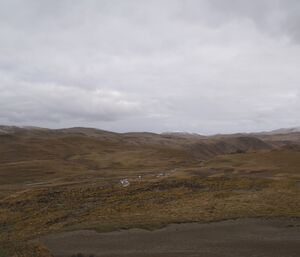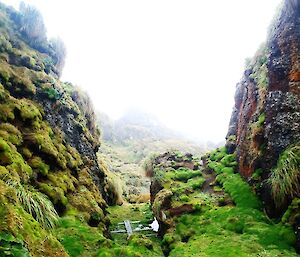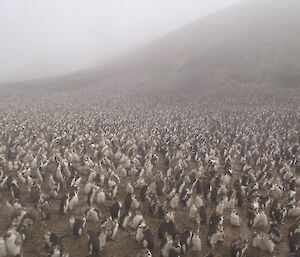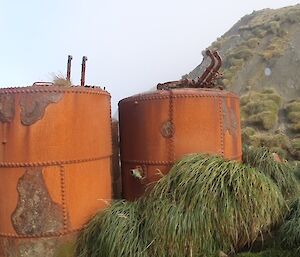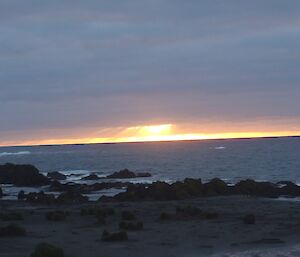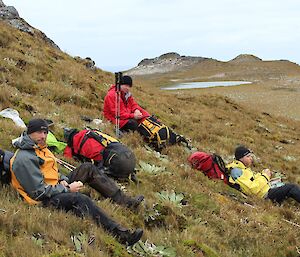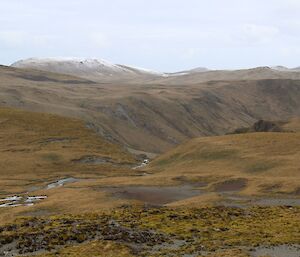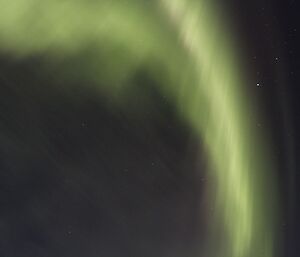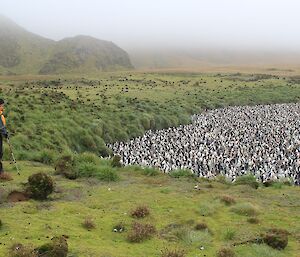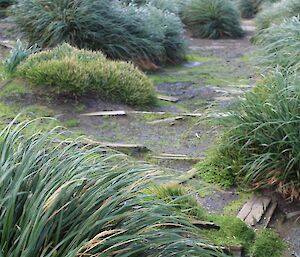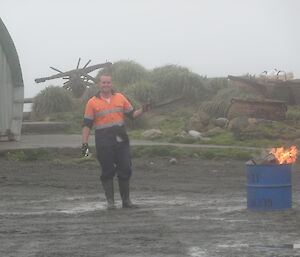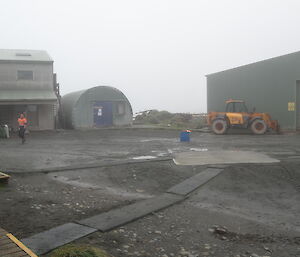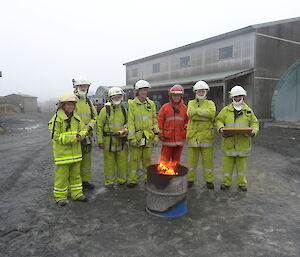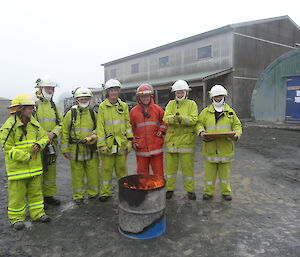One thing about a ranger’s life on Macquarie Island is that no two days are the same. One day you could be picking up rubbish on a beach on the remote west coast and the next day you could conducting a bird survey somewhere else on the island. One thing in common with both tasks however is the amount of walking involved.
The Bauer Bay cleanup undertaken last week involved a short round trip of about 14 kms. I will walk approximately 35 kms to undertake the monthly bird census around the northern half of the Macquarie island. Next week, I’m off down-island to check the status of the majestic wandering albatross chicks that hatched recently. I’ll cover approx 85 kms on that task — right to the bottom end of the island and back.
The aim of the monthly bird count project is to record the number of birds seen along a given section of the island. A number of different species including: southern giant petrels, northern giant petrels, antarctic terns, Macquarie Island cormorants, kelp gulls, skuas and ducks are counted. Information collected will be passed on to scientists and analysed to determine population trends over recent times.
Seabirds are known to travel vast distances, although some, such as the Macquarie Island cormorant, are known only to this location. As I travel around I also make observations and take notes on general conditions and that of some of the penguins.
On this last trip I was very privileged to come across a nesting wandering albatross. I carefully withdrew to a safe distance and photographed this bird with a zoom lens. Special measures will be put in place to ensure there is no further disturbance to these critically endangered species.
Chicks of both the northern and southern giant petrels will be nearing maturity soon. The data collected over these surveys will help scientists to understand just how successful, or otherwise, the last seasons breeding was.
Juvenile kelp gulls, now fully fledged, are still very distinctive flying over head in their mottled feathers. Some of the antarctic terns seen on this last trip are in breeding plumage with striking red legs and beaks. Macquarie Island cormorants occupy commanding positions on rock stacks along the foreshore. They are very certain to pick a site that is not exposed to the direct wave action of the ocean.
There is always something to be seen at the king penguin colonies. The older of this season’s chicks, in their beautiful chocolate coloured soft down feathers, are all gathering in large crèches getting ready for winter.
The royal penguins have almost finished moulting last season’s feathers. As you walk down wind of a colony, one thing you can’t help but notice is the amount of small feathers blowing on the wind — just like light snow.
Skuas are now starting to depart the island for warmer parts with the onset of winter. Giant petrel chicks are now starting to fledge. The adults hang voraciously around penguin rookeries waiting for the stragglers to fall behind The ’Law of the Claw’ applies here if you’re a slow penguin.
Chris Howard, Chief Ranger TASPWS

